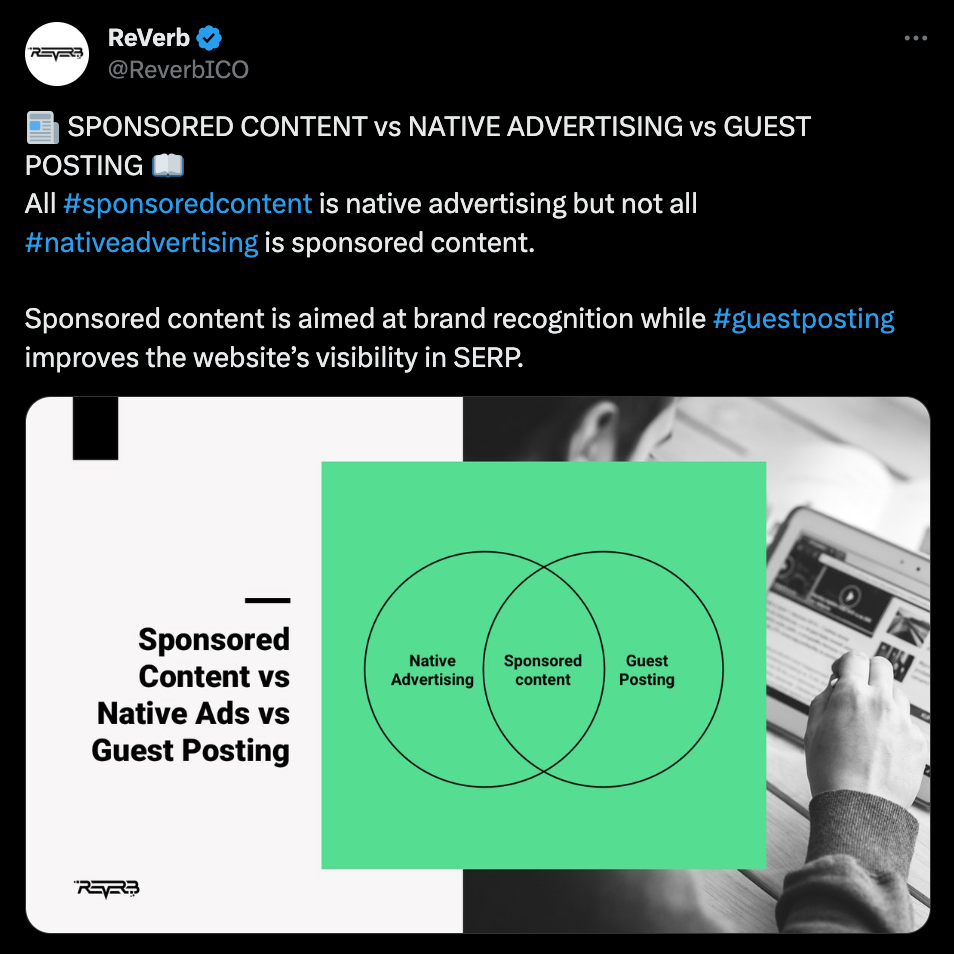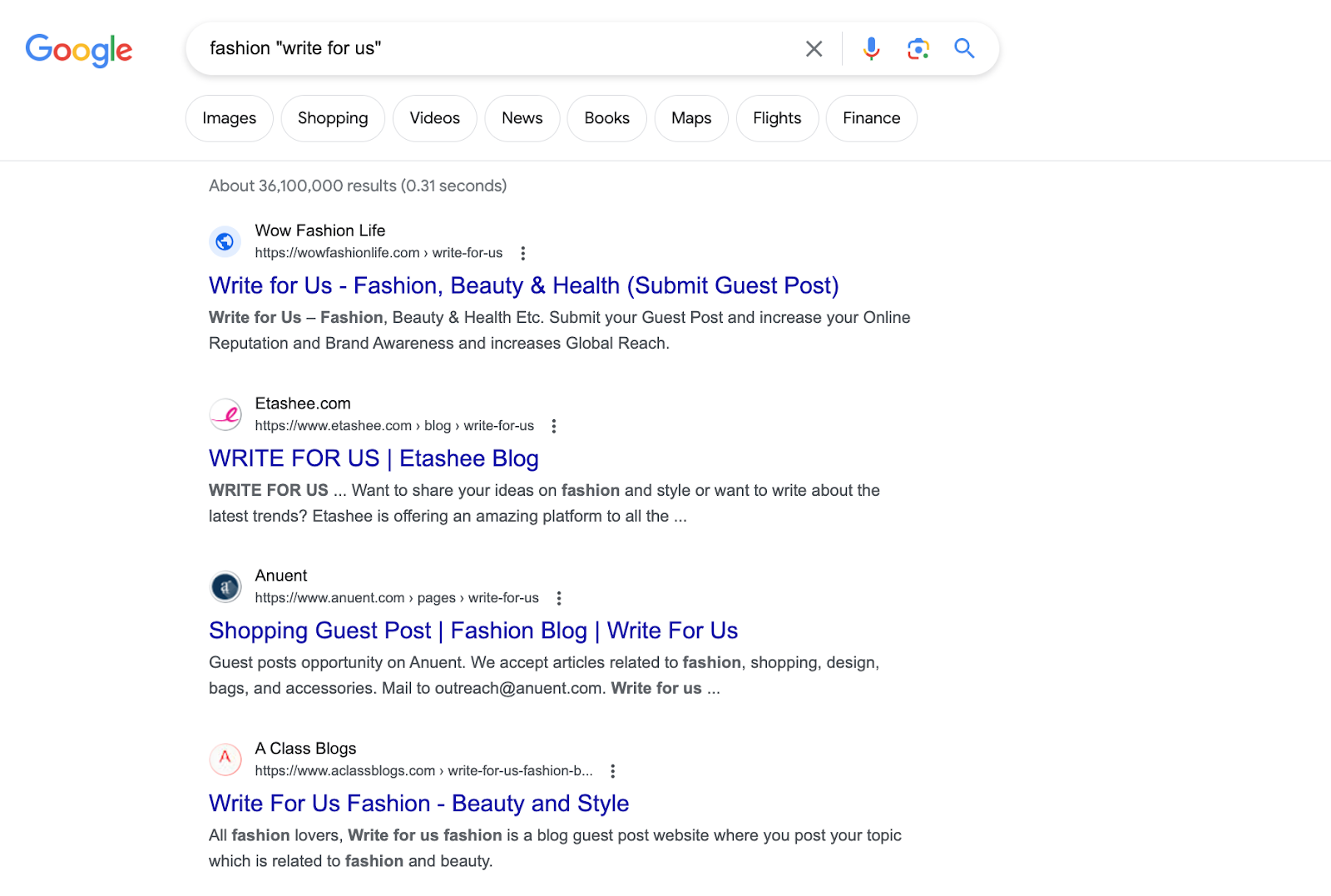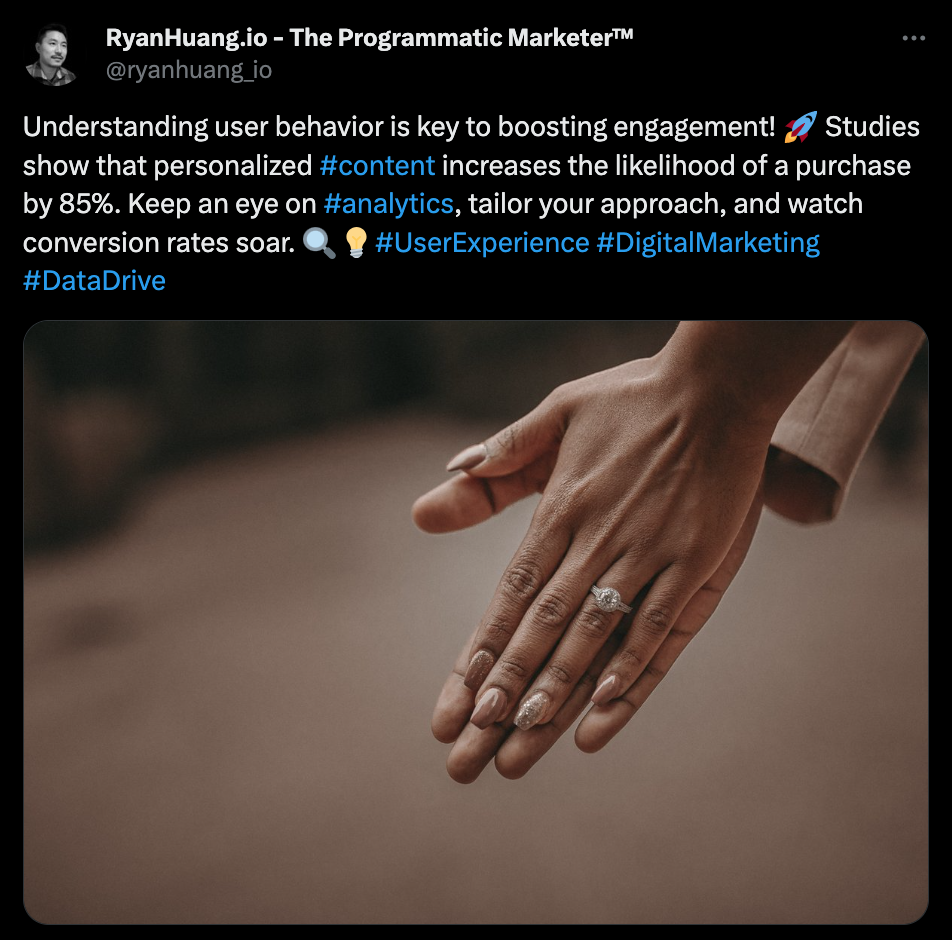Sponsored Posts: What They Are, Why You Need Them, and How to Deal With the Challenges

Raise your hand if you have ever gone through the pain of trying to find a sponsored post opportunity that ticks all the right boxes:
- When the blog or platform is relevant to your niche.
- When the audience engagement and reach are through the roof.
- When the whole opportunity comes at a price that doesn’t make you want to run away in the opposite direction.
Three words – THIS IS HARD.
But if you know the challenges and the ways to overcome them, you are golden. And that’s what you’ll become today.
Table of content:
- The Main Challenges of Sponsored Posts
- Why Bother With Sponsored Postings Anyway?
- What’s the Difference Between Sponsored and Guest Posting?
- The Best Platforms for Sponsorship
- — Guest Posting Stats
- — Instagram Stats
- — Facebook Stats
- — LinkedIn Stats
- — Twitter Stats
- — TikTok Stats
- How to Find Sponsored Content Opportunities on Blogs and Social Media
- — Be Clear About Your Brand and Niche
- — Try to Brush Up Your Google Skills
- — Take Advantage of Automated Tools and SEO Software
- — Consider Social Media as They Can Be Your Goldmine
- — Reach Out to the Brands You Admire
- — Get Professional Help When You Need It
- How to Improve Engagement and Drive Traffic?
The Main Challenges of Sponsored Posts
It may seem like there’s something wrong with most promoted posts. You may face the following issues:
- Price. Maybe the deal is perfect, but you have to break the bank just to afford it.
- Poor content. Sometimes, websites may lack that authentic feel or the scale and reach needed to push your brand forward to the right audience, but the pricing looks good.
- Bots and spam. Coupled with numerous fake followers and fake engagements, bots, and spam are big issues.
What if you could skip all this pain in one easy step and still get sponsored blog posts that make readers fall in love with you and want to know more about you? This is actually possible, but you should find an approach that suits you best. That’s exactly what this post will do.
Why Bother With Sponsored Content Anyway?
SEO tactics like sponsored posting have been used forever – at least since marketing became a thing. And even more people adopt the approach now.
About 60% of blogs aim for 1-5 guest posts each month, and some would be willing to pay to get published. And we all know is that marketers and bloggers don’t like to waste their time and budgets on something that’s not working.
So, check out some of the perks you can get from placing paid posts on SM channels:
- Increased brand exposure that creates a buzz around your brand
- Higher audience reach, which amplifies your brand message
- Higher targeted traffic
- Higher engagement ratings
- Enhanced conversion rates
- More backlinks to your site
- Improved search rankings
- More revenue
- Collaborative opportunities
What’s the Difference Between Sponsored and Guest Posting?

Source: @ReverbICO on X
The term “guest posting” originally meant that a webmaster gets content, and an SEO expert gets a link – everyone is happy. However, in some cases, webmasters refused to publish content for free and asked for money. This practice became known as sponsored posting. Whether it was a link or product advertising, an article placement had its cost.
What’s the situation now?
- The number of internet users is growing, and people want more links to their sites from other blogs.
- Today, almost everyone charges for content placement.
- Finding free guest posting is almost an impossible task. That’s why the term “sponsored post” fell out of use in this context.
In other words, there used to be sponsored posts – paid guest posts and guest posting – free placement. Whereas now, guest posting = paid content placement (in most cases).
Sponsored content now has other names like getting article backlinks, guest posting, etc. Even though the whole concept has gone blurry, one thing is clear – it’s the only working method to get links and bring your site to the top of search result pages.
Besides, an SEO expert can now choose a relevant site/platform, content, and anchor. But wait, which of the many platforms is the best choice for promoted posts?
The Best Platforms for Sponsorship
Well, let’s look at what the stats say about the more popular platforms for paid posting:
Guest Posting Stats
- Guest posting is responsible for about 65% of backlinks. Why is that important?
- For Google, backlinks are the top 1 ranking factor.
- And you know what? You get 97% more chances to get backlinks when blogging.
- Websites ranking as #1 in Google have around 3.8 times more backlinks than those in positions 2-10.
- Over 65% of SEO experts believe backlinks will have a similar or stronger influence on rankings in the next 5 years.
Instagram Stats
- As of 2023, Instagram has 2 billion active users, so your paid posts have the potential to make a trip around the globe faster.
- It ranks as the fourth most visited website globally, which makes it one of the best sites to place sponsored content or promote it.
- It’s a perfect resource to target or find a younger, trendy audience below the age of 50.
- 61% of people trust the product recommendations of influencers, and Instagram is the hub of influencer marketing.
- In 2023, the average frequency of posting on Instagram by brands was about five posts weekly.
Facebook Stats
- Facebook is the third most visited website in the world, so that’s a lot of potential traffic stream you can tap into.
- It has the highest return on investment compared to other social media platforms.
- Almost 55% of Facebook visitors use the platform to research brands and products. So, it makes sense to publish or promote your sponsored blog posts here, as more people can learn about your brand.
- Even though 7% of Gen Z are going to quit Facebook, still, there are about 71% of US users who visit Facebook regularly.
LinkedIn Stats
- More than 58 million companies have accounts on LinkedIn, which means it’s a great place to generate leads with your paid posts. In fact, 89% of B2B marketers already use the platform for that purpose.
- Most of the traffic, about 30.9%, comes from the US.
- It gets most of its traffic directly (over 73%) and from search traffic, so depending on your brand target keywords, this might be the best place for your sponsored content.
Twitter Stats

Source: Google
- The number of users who follow brands on Twitter and plan to purchase or have already purchased from them is 93.3% and 68.7%, respectively. The platform influenced those people to make purchase decisions.
- Most users spend an average of 30.9 minutes on the platform daily, making it ideal for those looking to improve engagement rates.
- 30% of consumers want to see more brands on Twitter.
Source: Demandsage
TikTok Stats
- 40% of the people using TikTok do not have a Facebook account. Thus, you should diversify your content distribution channels.
- Sponsored posts on TikTok get more engagement compared to other platforms.
- In 2022, TikTok had one of the highest ROIs on marketing content.
The stats clearly show that you can get excellent results from all the platforms and even better outcomes from leveraging a few, if not all of them.
How to Find Sponsored Content Opportunities on Blogs and Social Media
Here are some ideas you can use to discover sponsored posts’ potential:
1. Be Clear About Your Brand and Niche
Okay, this one is a no-brainer. Before searching for sponsored posts, you should understand the basics: be clear about your niche, brand values, goals, visions, and audience. Thus, you’ll shape your search and create your strategy.
Then, streamline your search to the profiles that align with your brand values. This way, you’ll find collaborators easily, and your content will make more impact.
2. Try to Brush Up Your Google Skills

Source: @ryanhuang_io on X
Sure, we all know how to use the most popular search engine in the world, but we also know there’s a difference between searching for the nearest Italian restaurant and finding a credible sponsored post opportunity. Don’t believe us?
Try searching for “get sponsored posts” and see what comes up. The results are mostly informational articles with an odd agency ad thrown in. Maybe if you dig or scroll long enough, you might find a site asking you to publish a post for them.
So, develop a keen eye for spotting websites that are open to sponsored blog post collaborations. Use the same approach you would for a free guest post outreach. Search for blogs with phrases like “fashion write for us,” etc. Now, you will find even more hits, but you still need to filter the results (more on this later).
3. Take Advantage of Automated Tools and SEO Software
To be fair, it takes too long to check out each potential site and run domain analyses to determine if it’s the right fit. But if you use an automated backlink-building tool, you can do the research in minutes, including submitting your ads and links on thousands of SM profiles, blogs, web directories, etc. It’s even easier to expand the search and set your preferences to get back blogs, accounts, or SM profiles that fit a given list of requirements.
Maybe you need sites with DA scores above 60 or social media accounts trending for specific keywords and with a minimum of 10k followers? Now, you can find them efficiently. Also, you should leverage SEO tools like Semrush for your analytics.
4. Consider Social Media as They Can Be Your Goldmine
Facebook, LinkedIn, Instagram – all of them can help you find what you are looking for in a unique way. When searching for sponsored media posts opportunities, you can use keywords or geotags, and add the #sponsored hashtag to see what comes up. Thus, you’ll find people in your niche who have published sponsored content in the past.
For Instagram, it’s hard to search for more than one hashtag at a time, so just use the #sponsored tag and then go through the results. You can also try doing a Google search but adding “+ Facebook” or your preferred SM platform to narrow down your search.
5. Reach Out to the Brands You Admire
Know a brand you would like to collaborate with? There’s no harm in putting yourself out there or making the first contact. What’s the worst that could happen? Now, what if they say “yes”? Sure, popular brands may get tons of emails asking for the same thing, but you can find ways to stand out and make your own pitch better.
You can also try tagging the chosen brand on some of your posts to build that rapport with them before they see your proposal. Do research, present a real pain point, and then offer your tried and tested solutions. Try to speak their language to show that you can add value to the brand, but not only gain from it.
6. Get Professional Help When You Need It
It’s hard to imagine that you can always do everything on your own. There will be days when the deadline is too close, and your plate seems full of more tasks. Then, it’s time to get some help, like outsourcing the creation of the sponsored post or campaign to white-hat service providers like LinksManagement.
How to Improve Engagement and Drive Traffic When Creating a Sponsored Post?

Source: @ryanhuang_io on X
If you are doing guest posting, you are definitely asking yourself – what can I do with my sponsored posting to improve engagement and drive traffic to my website? We have a couple of practical advice for you:
- Focus on quality research, quality content writing, and quality images – you get the drift.
- Know the language of your audience and speak like them.
- Tell, but show more by using infographics, stats, and stories to drive your message home.
- Keep it simple, short, and sweet because most people don’t want to read a blog-length SM post.
- Always have a clear CTA and include visuals to trigger the right response.
- Have a budget and allocate some more so you don’t run out of resources before your content is ready.
- Try to maintain a consistent posting routine.
- Keep learning about your audience as preferences and likes change.
- If an opportunity doesn’t sit right with you, then let it go; there will be others.
- Include contact information in your posts’ bio.
- Always adhere to the policies of every platform you are using.
- Be upfront about any sponsored content not to lose customers’ trust.
- Comb through the details of the contract before signing on the dotted lines.
- Ask your network to comment on sponsored posts or repost them to have even wider reachability.
- Track the backlinks and engagement rates of your post to know if it resonates with your audience.
How can I know when a site is perfect for a sponsored post?
There is no one-fits-all when it comes to choosing a website for sponsored posting. Still, look for the following:
– A site that gives you some control over your publication.
– Matches your budget.
– Accepts your blog (meaning you don’t have to rewrite your copy dozens of times to fit their “tone of voice”).
– Make sure the webmaster is fine with your URL and anchor.
– Plus, try to find a thematic website that has good traffic and a small number of outgoing links.
In reality, you will have to balance these criteria, though. It’s unlikely you’ll find a perfect site every time, so you’ll need to make some compromises.
Thank you so much. I really got some useful info here.
Are there any risks when I do sponsored posting? Or isn’t sponsored posting risky for SEO?
There are always risks, even when you’re not doing anything for your SEO at all. To protect yourself, it’s better to hire an SEO expert and a link builder. A detailed answer on risk mitigation would be a whole article, which we might publish in the future.